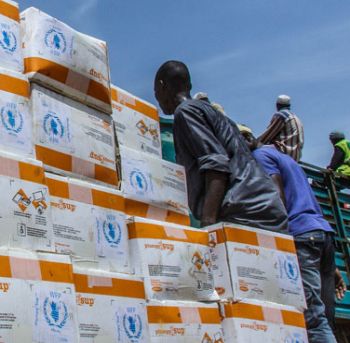The malnutrition bazaar: the case of RUTF
Abstract
Severe acute malnutrition (SAM) in children is life-threatening. Its causes range from lack of access to balanced food, to incorrect feeding practices, lack of access to an efficient health system, to clean potable water and sanitation. However, the present approach to managing SAM is fortified packaged food – a paste made with peanuts or other protein rich food such as chickpeas, milk and sugar, to which micronutrients are added. Currently, a version of the paste with less energy levels is also being recommended for treating even moderate forms of malnutrition, as well as for prevention of malnutrition (World Health Organization (WHO), 2012; WHO/UNICEF/WFP, 2014; WFP/UNICEF/USAID, undated).
The large number of malnourished children around the globe furnish the food and pharmaceutical industries with an immense potential market for these fortified food packages. That the market for ready-to-use therapeutic foods (RUTFs) is rapidly expanding is primarily due to its endorsement by the World Health Organisation (WHO, the World Food Programme, the United Nations System Standing Committee on Nutrition[1] (UNSCN) and UNICEF for treating SAM (World Health Organization, the World Food Programme, the United Nations System Standing Committee on Nutrition and the United Nations Children’s Fund. (2007).). Non state actors like Action Against Hunger (Action Contre La Faim) and Médecins Sans Frontières have also been working to introduce RUTF treatment in countries such as Ethiopia, Nigeria, Libya, Chad, Central African Republic, Malawi, Yemen, India and Pakistan. In addition, several of the new manufacturers use unethical marketing practices to increase their share of sales.
The long-term sustainable solution to reducing undernutrition has to be based on policies that manage conflict, inequity, gender imbalance, food sovereignty and security, infant and young child feeding, basic health services and provision of safe drinking water and sanitation.
[1] In 2020, the UN Network for SUN (UNN) merged with the United Nations System Standing Committee on Nutrition (UNSCN) to form a new entity, called UN Nutrition. As of 1 January 2021, the UN Nutrition Secretariat, hosted by FAO headquarters, became operational.

Authors retain all copyrights. In making a submission to World Nutrition, they are certifying that all material is theirs except quotations, as indicated, and that they have obtained permission for any photos, tables, or graphics taken from other publications or websites.




